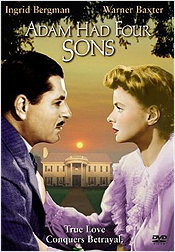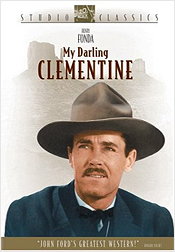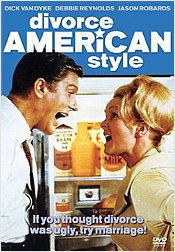 |
Site created 12/15/97.

page created: 1/23/04
12 Classic Films on DVD
(continued)
reviews by Barrie Maxwell of The Digital Bits
| Previous
classic reviews... |
| The
Edge of the World (1937) (released on DVD by Milestone on December 9th, 2003) Director Michael Powell's first major independent production and one that signaled the end of his toils on British quota quickies was a true labour of love. Ever since 1930 when he had read of the evacuation of the island of St. Kilda in the Hebrides off the west coast of Scotland, Powell had wanted to dramatize the plight of inhabitants on remote Scottish islands forced by "progress" to abandon a form of living no longer viable. Unable to use the actual island of St. Kilda, he settled on Foula in the Shetland Islands north of Scotland as his setting and spent five and a half months there in 1936 shooting the bulk of what would become The Edge of the World. The film's story centers on two island families, the Mansons and the Grays. Robbie Manson sees no future on the island, but Andrew Gray who loves Robbie's sister Ruth disagrees. The two young men decide to settle their argument by climbing the island's 1220-foot cliffs. This leads to a tragedy that splits the two families apart and leads to irreversible change for the island. |
| Milestone's
DVD is memorable also. The transfer is from a restoration of the
original 35mm nitrate negative by the British Film Institute. The
results are far from pristine, but more than workable nonetheless.
There's a fair bit of speckling and several instances of flicker,
with the image lacking the consistent crispness that characterizes
the best looking transfers. Nonetheless, Powell's compositions are
not compromised and their beauty as well as the story's simple
honesty soon make you forget any of the transfer's imperfections.
The Dolby Digital 2.0 mono is quite adequate to convey the dialogue
and the sound of the sea as it pounds the rocks of the island. The disc's supplements are ample and include a very informative audio commentary featuring film scholar Ian Christie, Powell's widow Thelma Schoonmaker-Powell, and Daniel Day Lewis (who reads passages from a book that Powell wrote of his experiences filming on the island). The hardships that Powell and his crew had to endure in doing the filming were incredible, but not too surprising having seen the film. Also included are a 23-minute colour short Return to the Edge of the World which documents Powell's 1978 return to the island and An Airman's Letter to His Mother - a six-minute 1943 short that Powell directed. DVD-ROM content includes the impressively thorough 1937 press kit and Milestone's own press kit for the DVD release. Highly recommended. Adam Had Four Sons (1941) (released on DVD by Columbia on January 6th, 2004) David O. Selznick had persuaded Ingrid Bergman to come to America to star in Intermezzo in 1939 with Leslie Howard. The film was a remake of the original Swedish production in which Bergman had also appeared and that had first drawn Selznick's interest. After the remake, however, Selznick seemed to lose interest in Bergman who was eager to keep working. To fill in the time, she took on the lead role in "Liliom" on the New York stage while urging Selznick to line up new film work for her. Finally, Selznick came through with a loan-out to Columbia in late 1940. There she would appear in Adam Had Four Sons, an adaptation of the Charles Bonner novel, "Legacy". Bergman would play the role of a French governess, Emilie Galatin, who comes to look after the four sons of a well-off American couple. After the wife dies, Emilie remains to serve the widower, Adam, and his sons, seeing the family through financial hardship and the start of the first World War. A growing attraction between Adam and Emilie lies repressed until one of the sons takes a young bride who brings hatred and jealousy to the family home. |
| Despite
source material that has plenty of speckles and miscellaneous
debris, Columbia has fashioned a pretty good full frame transfer (in
accord with the OAR). The image is quite crisp with a very good gray
scale and fine shadow detail. Edge effects are not in evidence. The
Dolby Digital 2.0 mono sound track is more than adequate in clarity.
English sub-titles are provided. Supplements are restricted to the
standard Columbia package of several trailers (in this case All
the King's Men, Born Yesterday,
and On the Waterfront), none
of which remotely have any connection to Adam
Had Four Sons. My Darling Clementine (1946) (released on DVD by Fox on January 6th, 2004) Wyatt Earp has been the subject of numerous westerns over the years, ranging from Law and Order (1932) and Frontier Marshal (1939) to Gunfight at the O.K. Corral (1957), Hour of the Gun (1967), and Tombstone (1993). Every version has had something to recommend it, but a 1946 film directed by John Ford, My Darling Clementine, bids fair to be the finest of the lot. |
| The
film was well received though it barely broke even. More
importantly, however, it was recognized for what it is - not just an
entertaining western but a mood piece that focuses on the story's
characters and their interactions, unworried about historical
exactness and presenting its action sequences abruptly (and quite
brutally for Ford) almost as afterthoughts. Fonda's Earp is measured
and meditative, yet capable of quick action when finally called for.
The portrayal certainly ranks in the handful of that fine actor's
best performances. That, along with Walter Brennan's masterful
playing of Ike Clanton (he reportedly put all his dislike of Ford
into his character) and Ford's characteristic orchestration resulted
in one of Ford's best films and one of anyone's best westerns. "Poetic"
is often the term used to describe this film; it's not far wrong. Fox has made My Darling Clementine available on DVD as part of its Studio Classics series. On one side of the disc, we get the theatrical release version of the film (96 minutes). The full frame transfer (in accord with the OAR) is quite crisp with deep blacks and good shadow detail for the most part. There are a few darker sequences where detail tends to get somewhat lost. Edge effects are insignificant. Accompanying the film is an audio commentary by Ford biographer Scott Eyman and Wyatt Earp III. Most of the talking is done by Eyman who seems to have a wealth of historical detail and comment to convey. Earp's contributions on the real Wyatt Earp and Doc Holliday is particularly interesting. Both stereo and mono sound tracks are provided and for once, the stereo one does offer a richer experience with some noticeable separation effects. There is some minor evidence of hiss. Mono Spanish and French tracks are also provided as are English and Spanish sub-titles. The other side of the disc contains a pre-release version of the film that is partway between Ford's original cut and the final theatrical version. The DVD transfer, though still quite good, is slightly less impressive than that for the theatrical cut with more grain and occasionally more softness in evidence. UCLA preservationist Bob Gitt narrates a fascinating documentary (about 40 minutes in length) explaining the differences between the two versions of the film. Other supplements include a gallery of 18 stills and the original theatrical trailer. Very highly recommended. Divorce American Style (1967) (released on DVD by Columbia on January 6th, 2004) I guess Columbia thought it was 1984 instead of 2004. Twenty years ago, in the days of VHS supremacy, studios occasionally used to letterbox the opening credits of a film and then switched to full screen for the picture itself. Nowadays, if studios are thoughtless enough to release full frame versions, they usually just jump right into it without teasing us with what should have been. I guess they hope we won't notice. Not Columbia, however. Their recent DVD release of Divorce American Style is right from 1984, with an opening letterboxed sequence suddenly spreading to full screen as the last credit fades. |
| Dick
Van Dyke and Debbie Reynolds offer likable portrayals as the
divorcing couple while the likes of Jason Robards, Jean Simmons, and
Van Johnson keep the boat afloat with a few amusing plot twists.
Certainly one can sit through all this once and even be mildly
entertained if in the right mood. The film itself won't leave a bad
taste in your mouth, but repeat value there isn't. What will leave a
bad taste is Columbia's unwillingness to show the film-makers the
respect they deserve by at least presenting their efforts, good or
bad, as they were intended to be seen. The image transfer is
pleasing enough in terms of crispness, colour fidelity, and the
absence of all but minor edge effects, but why go to the bother of a
high definition transfer that involves letterboxing the credits but
nothing else? There are English sub-titles and three trailers, none
of which is for Divorce American Style. Marooned (1967) (released on DVD by Columbia on November 18th, 2003) When Apollo 13 (1995) was released, it was somewhat amazing to see the degree of suspense that could be developed surrounding a real-life story whose outcome was common knowledge. That success was a testament to the film-making abilities of its director, Ron Howard, and a very fine cast that included Tom Hanks, Gary Sinise, Kevin Bacon, and Ed Harris. Flash back over 25 years to another film with a somewhat similar theme - Marooned. Based on a novel by Martin Caidin, the film told the story of an American spaceship crew attempting to return to Earth after an extended mission to an orbiting space station. When the spacecraft's retro rockets fail to fire, the astronauts appear doomed to die in orbit until a daring rescue mission is mounted. |
| Aside
from the occasional outbursts from the characters played by Janssen
and Hackman, everyone acts very calmly and each event in the plot is
methodically presented. A few short-attention-span viewers will have
little time for such an approach, but those who persevere will be
rewarded by an intelligent experience that possesses some
extraordinary moments (for example, the sequence during which the
three astronauts discuss sacrificing one of their lives). The film's
special visual effects don't seem particularly startling nowadays,
but did win an Academy Award. They're well integrated into the story
and for the most part are reasonably realistic-looking even after
one has been exposed to 35 years of seeing real-life astronauts
working in space. Columbia presents the film in quite a decent 2.35:1 anamorphic transfer. There is some dirt and debris in evidence (especially during first quarter of the film), but the transfer itself yields deep blacks and good colour fidelity. Shadow detail is quite good and edge effects are minimal. The so-called Dolby Surround track, if that's what it really is, suggests little beyond two-channel mono. Dialogue is clear throughout. Columbia provides four trailers for Ray Harryhausen films, but none for Marooned. Recommended. |
| Barrie Maxwell - Main Page |
 |
| Site
designed for 1024 x 768 resolution, using 16M colors and .gif 89a
animation. © 1997-2015 The Digital Bits, Inc., All Rights Reserved. billhunt@thedigitalbits.com |




